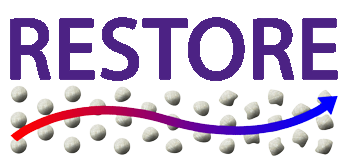Contribution of Septic Systems to Nutrient Contamination of Surface Waters
The Problem
Septic systems are onsite wastewater disposal systems used in areas not serviced by centralized wastewater treatment plants. Approximately 14% of household in Canada use septic systems for domestic wastewater treatment. Functioning septic systems deliver partially treated wastewater into the subsurface via a drainage field where there is generally high removal of wastewater contaminants. However, it is estimated around 20% of septic systems in Canada are failing leading to high input of wastewater contaminants into surface waters. Contaminants in septic system wastewater that may enter and deteriorate surface waters including nutrients, emerging contaminants (pharmaceuticals, hormones), microplastics, and metals.

Pathways via which septic system wastewater may be delivered to surface waters
Project Objectives
- Evaluate the types and rates of septic system failures and the contribution of failing systems to deteriorating surface water quality
- Develop a regional-scale geospatial tool that can be applied to estimate surface waters vulnerable to high contaminant, particularly phosphorus, loads from septic systems
Research Methods
Field Work
Use human wastewater tracers including artificial sweeteners and human microbial source tracking markers to quantify septic effluent contributions to streams and identify the rates of septic system failures in subwatersheds.


Geospatial Modeling
Develop a geospatial tool in ArcGIS to identify the location of septic systems across Ontario watersheds and apply calculations based on field data analysis to estimate contaminants inputs to tributaries.

Project Output
Journal Papers
Oldfield, L., J. Roy, C.E. Robinson, 2020. Investigating the use of the artificial sweetener acesulfame to evaluate septic system inputs and their nutrient loads to streams at the watershed scale, Journal of Hydrology, doi: 10.1016/j.jhydrol.2020.124918.
Oldfield L., S. Rakhimbekova, J.W. Roy, C.E. Robinson, 2020. Estimation of phosphorus loads from septic systems to tributaries in the Canadian Lake Erie Basin, Journal of Great Lake Research, 46(6), DOI: 10.1016/j.jglr.2020.08.021.
Rakhimbekova, S., D.M. O’Carroll, L. Oldfield, C. Ptacek, C.E. Robinson, 2021. Spatiotemporal controls on septic system derived nutrients in a nearshore aquifer and their discharge to a large lake, Science of the Total Environment, 752, doi: 10.1016/j.scitotenv.2020.141262.
A. Tamang , J. Roy, M. Boreux, C.E. Robinson, 2022. Variation in septic system effluent inputs to tributaries in multiple subwatersheds and approaches to distinguish contributing pathways and areas. Science of The Total Environment, 807. DOI:10.1016/j.scitotenv.2021.151054
Theses
Oldfield, L., 2019. Estimation of nutrient loads from septic systems to tributaries in the Lake Erie Basin, Master of Engineering Science Thesis, Civil and Environmental Engineering, University of Western Ontario, Available at: https://ir.lib.uwo.ca/etd/6057.
Tamang, A., 2020, Quantification of septic system contributions to nutrient loads to surface waters, Master of Engineering Science Thesis, Civil and Environmental Engineering, University of Western Ontario.
Select Conference Papers
Tamang, A., J.W. Roy, C.E. Robinson, 2019. Tracers for evaluating septic system inputs into surface waters, Proc. State of Lake Huron Meeting, Saginaw, Michigan, October 10-11.
Oldfield, L., J.W. Roy, A. Tamang, C.E. Robinson, 2019. Use of artificial sweetener acesulfame to evaluate septic effluent contributions to tributaries at watershed scale, Proc. 27th International Union of Geodesy and Geophysics (IUGG) General Assembly, Montreal, Canada, July 6-20.
Tamang, A., J.W. Roy. C.E. Robinson, 2019. Evaluation of the percentage of septic system effluent reaching tributaries in the Lake Simcoe watershed, Proc. International Association of Great Lakes Research (IAGLR) 2019, Brockport, NY. June 10-14.
Oldfield, L., C. Robinson, 2018. Estimation of phosphorus loading from septic systems to the Lake Erie Basin using a geospatial model, Proc. International Association of Great Lakes Research Annual Meeting, Toronto, ON.
Project Team
Project Leaders:
Project Members:
Archana Tamang, MESc (Completed 2020)
Lauren Oldfield, MESc (Completed 2019)
Supporting Organizations:




